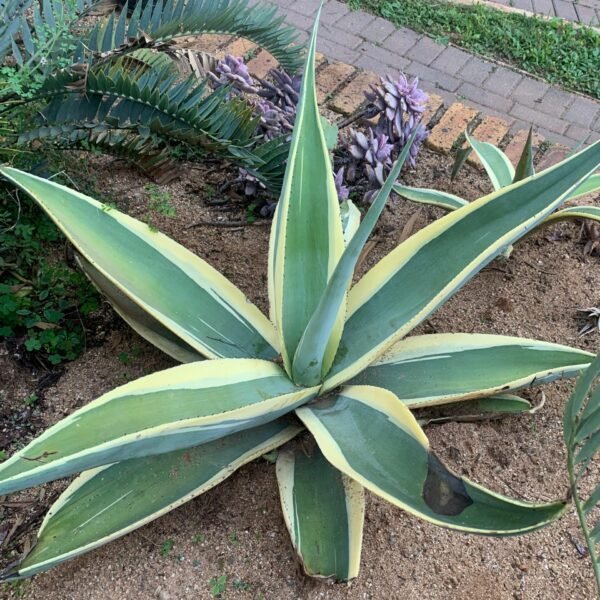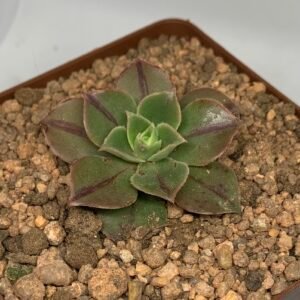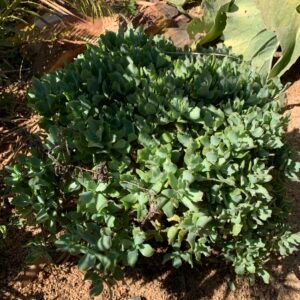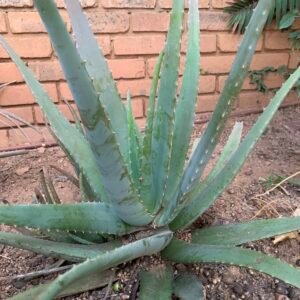Common names: Agave guiengola ‘Crème Brûlée’, Variegated Guiengola Agave
Family: Asparagaceae
Agave guiengola ‘Crème Brûlée’ is a stunning variegated form of the Guiengola Agave, known for its large, fleshy leaves marked with creamy-yellow margins and soft blue-green centers. This elegant, sculptural succulent is prized for its bold contrast, smooth texture, and modern architectural appeal — perfect for containers, rock gardens, or minimalist landscapes.
Origin and Habitat
Native to the limestone slopes of Oaxaca, Mexico, Agave guiengola thrives in arid, well-drained environments with high sun exposure and infrequent rainfall. The ‘Crème Brûlée’ cultivar maintains these hardy traits while displaying more ornamental variegation ideal for decorative settings.
Plant Description
This variety forms broad, slightly curved leaves that grow in an open rosette, reaching up to 60–90 cm tall and over 1 m wide when mature. The smooth leaves have soft, undulating edges lined with small, evenly spaced brown teeth and tipped with a short spine. Its variegation pattern — creamy margins against glaucous blue centers — gives the plant a distinctive, refined look. Mature plants may produce a tall flowering spike with pale yellow blooms before the main rosette dies back, leaving offsets to continue growth.
Care Instructions
Light
Prefers full sun to bright, indirect light. Variegation is best maintained with plenty of sunlight.
Watering
Water deeply but infrequently, allowing the soil to dry completely between waterings. Avoid standing water and reduce watering in winter.
Soil
Use a very well-draining succulent or cactus mix. Incorporate gravel, perlite, or coarse sand for extra drainage.
Temperature
Ideal temperatures are 18°C–30°C. Protect from frost and prolonged cold below 5°C.
Additional Information
Agave guiengola ‘Crème Brûlée’ is a slow-growing, drought-tolerant variety that brings color and structure to any succulent display. It performs beautifully in containers or outdoor xeriscape gardens and requires minimal maintenance. Its refined variegation and sculptural leaf form make it a collector’s favorite and a striking focal point in modern garden design.





